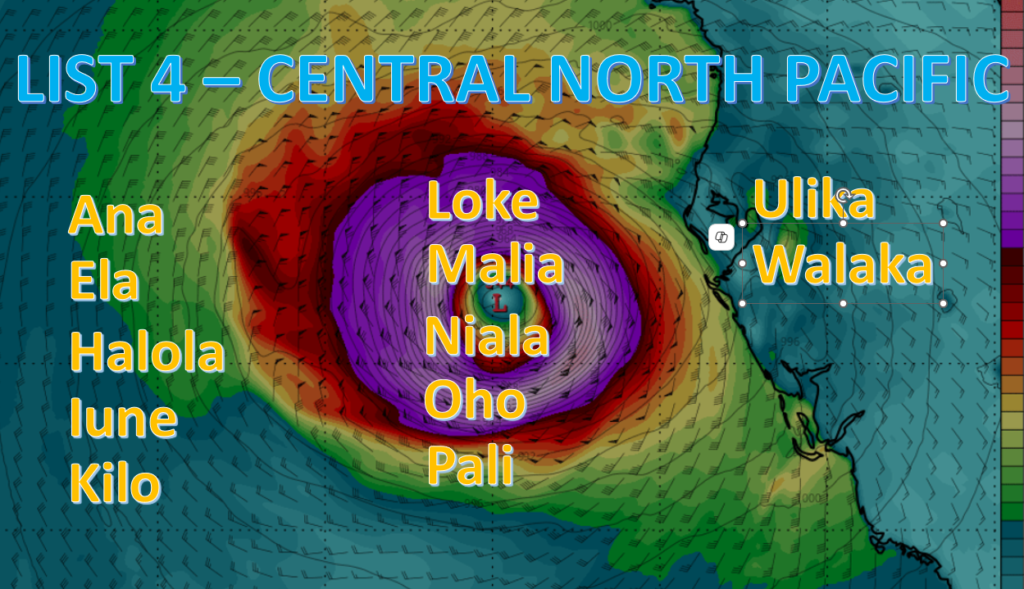Why We Name Tropical Cyclones?
Studies show that naming tropical cyclones makes it easier for the public to understand warning information and creates far less confusion when compared to the latitude-longitude identification method. This is especially true when there are two (2) or more named storms at the same time.
According to the World Meteorological Organization (WMO), the naming of tropical cyclones has proven to be the fastest way to communicate warnings and raise public awareness and preparedness.
History of Naming Hurricanes
Clement Wragge, an Australian Meteorologist was the first individual to begin using female names for tropical storms during the 20th century. An early example of utilizing a female’s name for a storm came from the novel “Storm” written by George R. Stewart, which was published by Random House in 1941. Eventually, in 1953, the United States began incorporating female names for tropical cyclones.
Until 1978, the United States named storms only after women. This came to an end because both men and women names were included in the Eastern North Pacific lists. Therefore, in the year 1979, both male and female names were used for the Atlantic and Gulf of America.
How Are Storms Named?
The WMO comes up with strict guidelines to determine the list for tropical cyclone names. There are various rules all across the globe when it comes to naming tropical cyclones.
Process that is used: From the World Meteorological Organization (WMO) – The process of determining names for tropical cyclones is conducted by the relevant tropical cyclone regional body at its annual/biennial session. There are five (5) tropical cyclone regional bodies i.e. ESCAP/WMO Typhoon Committee, WMO/ESCAP Panel on Tropical Cyclones, RA I Tropical Cyclone Committee, RA IV Hurricane Committee, and RA V Tropical Cyclone Committee. These bodies establish pre-designated lists of names which are proposed by WMO Members’ National Meteorological and Hydrological Services. The selection of names is based upon familiarity to the citizens in each region, with the goal of being to assist in understanding and remembrance of cyclones. The naming procedures can vary, with some regions using alphabetical order and others using the alphabetical order of country names.
When selecting a name, consideration is given to certain factors:
- Short in character length for ease of use in communication
- Easy to pronounce
- Appropriate significance in different languages
- Uniqueness – same names won’t be used in other regions
Tropical Cyclone Names for Atlantic Basin and the East/Central North Pacific Basins
Atlantic Tropical Cyclone Names (2025 - 2030)
2025
Andrea
Barry
Chantal
Dexter
Erin
Fernand
Gabrielle
Humberto
Imelda
Jerry
Karen
Lorenzo
Melissa
Nestor
Olga
Pablo
Rebekah
Sebastien
Tanya
Van
Wendy
2026
Arthur
Bertha
Cristobal
Dolly
Eduoard
Fay
Gonzalo
Hanna
Isaias
Josephine
Kyle
Leah
Marco
Nana
Omar
Paulette
Rene
Sally
Teddy
Vicky
Wilfred
2027
Ana
Bill
Claudette
Danny
Elsa
Fred
Grace
Henri
Imani
Julian
Kate
Larry
Mindy
Nicholas
Odette
Peter
Rose
Sam
Teresa
Victor
Wanda
2028
Alex
Bonnie
Colin
Danielle
Earl
Farrah
Gaston
Hermine
Idris
Julia
Karl
Lisa
Martin
Nicole
Owen
Paula
Richard
Shary
Tobias
Virginie
Walter
2029
Arlene
Bret
Cindy
Don
Emily
Franklin
Gert
Harold
Idalia
Jose
Katia
Lee
Margot
Nigel
Ophelia
Philippe
Rina
Sean
Tammy
Vince
Whitney
2030
Alberto
Brianna
Chris
Debby
Ernesto
Francine
Gordon
Holly
Isaac
Joyce
Kirk
Leslie
Miguel
Nadine
Oscar
Patty
Rafael
Sara
Tony
Valerie
William
Eastern North Pacific Tropical Cyclone Names (2025 - 2030)
2025
Alvin
Barbara
Cosme
Dalila
Erick
Flossie
Gil
Henriette
Ivo
Juliette
Kiko
Lorena
Mario
Narda
Octave
Priscilla
Raymond
Sonia
Tico
Velma
Wallis
Xina
York
Zelda
2026
Amanda
Boris
Cristina
Douglas
Elida
Fausto
Genevieve
Hernan
Iselle
Julio
Karina
Lowell
Marie
Norbert
Odalys
Polo
Rachel
Simon
Trudy
Vance
Winnie
Xavier
Yolanda
Zeke
2027
Andres
Blanca
Carlos
Dolores
Enrique
Felicia
Guillermo
Hilda
Ignacio
Jimena
Kevin
Linda
Marty
Nora
Olaf
Pamela
Rick
Sandra
Terry
Vivian
Waldo
Xina
York
Zelda
2028
Agatha
Blas
Celia
Darby
Estelle
Frank
Georgette
Howard
Ivette
Javier
Kay
Lester
Madeline
Newton
Orlene
Paine
Roslyn
Seymour
Tina
Virgil
Winifred
Xavier
Yolanda
Zeke
2029
Adrian
Beatriz
Calvin
Debora
Eugene
Fernanda
Greg
Hilary
Irwin
Jova
Kenneth
Lidia
Max
Norma
Otilio
Pilar
Ramon
Selma
Todd
Veronica
Wiley
Xina
York
Zelda
2030
Aletta
Bud
Carlotta
Daniel
Emilia
Fabio
Gilma
Hector
Ileana
Jake
Kristy
Lane
Miriam
Norman
Olivia
Paul
Rosa
Sergio
Tara
Vicente
Willa
Xavier
Yolanda
Zeke
Central North Pacific Tropical Cyclone Names (List 1 - 4)
List 1
Akoni
Ema
Hone
Iona
Keli
Lala
Moke
Nolo
Olana
Pena
Ulana
Wale
List 2
Aka
Ekeka
Hene
Iolana
Keoni
Lino
Mele
Nona
Oliwa
Pama
Upana
Wene
List 3
Alika
Ele
Huko
Iopa
Kika
Lana
Maka
Neki
Omeka
Pewa
Unala
Wali
List 4
Ana
Ela
Halola
Iune
Kilo
Loke
Malia
Niala
Oho
Pali
Ulika
Walaka
For the Eastern North Pacific Basin, these tropical cyclone name lists are reused every six years. Therefore, the 2024 list will be used again in 2030.
In the event that all of the names are exhausted in a given season, any additional storms will be given names from an alternate list approved by the World Meteorological Organization (WMO).
Eastern North Pacific Supplemental Tropical Cyclone Names
Aidan, Bruna, Carmelo, Daniella, Esteban, Flor, Gerardo, Hedda, Izzy, Jacinta, Kenito, Luna, Marina, Nancy, Ovidio, Pia, Rey, Skylar, Teo, Violeta, Wilfredo, Xinia, Yariel, and Zoe
In the Central North Pacific Basin, the tropical cyclone names are used one after another in descending order through the lists. Once one list is exhausted, we begin at the top of the next list.
In the Atlantic Basin, the lists of tropical cyclone names are used in rotation and are recycled every six years. The only time a name will be retired is if a storm is so deadly/costly that the future use of that name for another storm would be insensitive. If this situation does occur, then a WMO committee will replace the offending name with another name. There have been several names that have been retired since the naming of tropical cyclones began in 1953.
Just as is the case for the Eastern North Pacific Basin, if a name list is exhausted, any additional storms will be given names from an alternate list approved by the World Meteorological Organization (WMO).
Atlantic Supplemental Tropical Cyclone Names
Adria, Braylen, Caridad, DeShawn, Emery, Foster, Gemma, Heath, Isla, Jacobus, Kenzie, Lucio, Makayla, Nolan, Orlanda, Pax, Ronin, Sophie, Tayshaun, Viviana, and Will
2025 Atlantic Tropical Cyclone Names
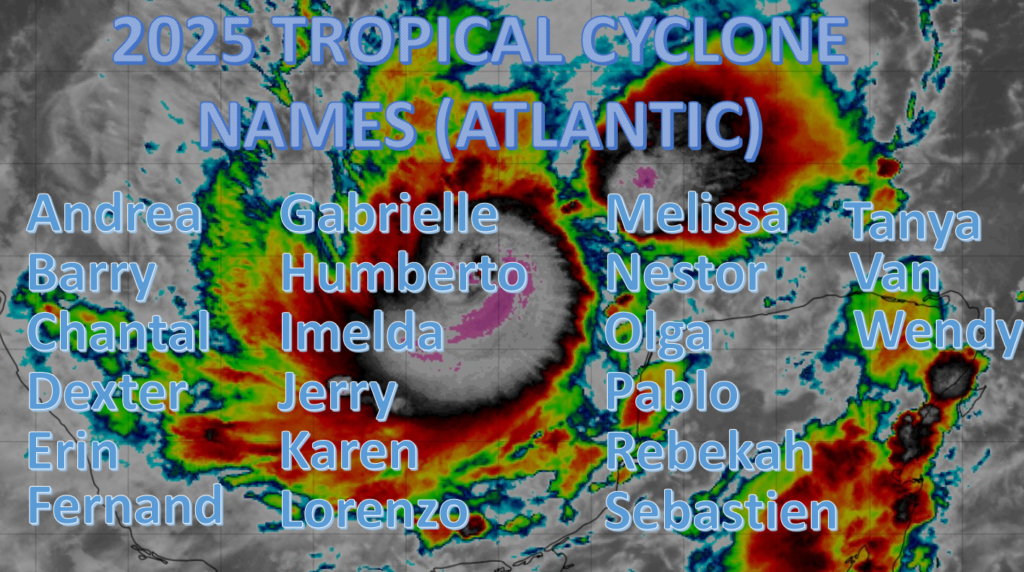
2025 Eastern North Pacific Tropical Cyclone Names
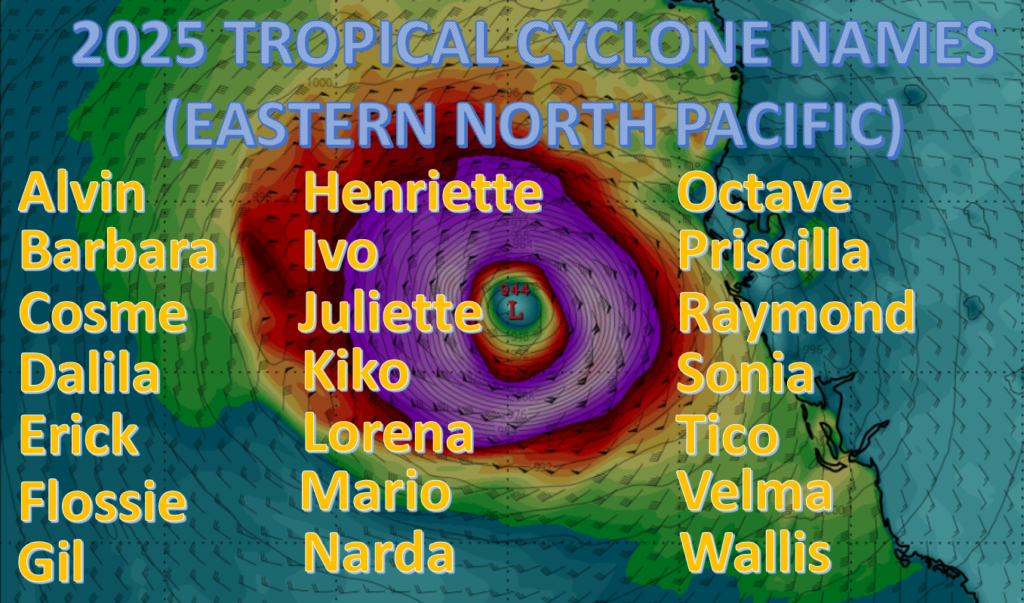
Retired Storm Names
The only time storm names are retired is when a storm is so deadly/costly that it would be very insensitive to use the name for another storm. If this does occur, then at an annual meeting by a World Meteorological Committee, the name would be removed from the list and a replacement name would be provided. The most recent storm names to be retired in the Atlantic Ocean Basin were Beryl, Helene, and Milton, all of which occurred in 2024. The most recent storm name to be retired from the Eastern North Pacific list was John and also occurred in 2024.
Retired Atlantic Storm Names Over the Years (Atlantic Ocean, Caribbean Sea, and Gulf of America)
1954
Carol
Hazel
Edna
1957
Audrey
1960
Donna
1963
Flora
1966
Inez
1969
Camille
1972
Agnes
1975
Eloise
1978
Greta
1981
None
1984
None
1987
None
1990
Diana
Klaus
1993
None
1996
Cesar
Fran
Hortense
1999
Floyd
Lenny
2002
Isidore
Lili
2005
Dennis
Katrina
Rita
Stan
Wilma
2008
Gustav
Ike
Paloma
2011
Irene
2014
None
2017
Harvey
Irma
Maria
Nate
2020
Laura
Eta
Iota
1955
Connie
Diane
Ione
Janet
1958
None
1961
Carla
Hattie
1964
Cleo
Dora
Hilda
1967
Beulah
1970
Celia
1973
None
1976
None
1979
David
Frederic
1982
None
1985
Elena
Gloria
1988
Gilbert
Joan
1991
Bob
1994
None
1997
None
2000
Keith
2003
Fabian
Isabel
Juan
2006
None
2009
None
2012
Sandy
2015
Erika
Joaquin
2018
Florence
Michael
2021
Ida
1956
None
1959
None
1962
None
1965
Betsy
1968
None
1971
None
1974
Carmen
Fifi
1977
Anita
1980
Allen
1983
Alicia
1986
None
1989
Hugo
1992
Andrew
1995
Luis
Marilyn
Opal
Roxanne
1998
Georges
Mitch
2001
Allison
Iris
Michelle
2004
Charley
Frances
Ivan
Jeanne
2007
Dean
Felix
Noel
2010
Igor
Tomas
2013
Ingrid
2016
Matthew
Otto
2019
Dorian
2022
Fiona
Ian
2023
None
2024
Beryl
Helene
Milton
2025
Hurricane Season runs from June 1st – November 30th! Stay tuned!
Retired Central and Eastern North Pacific Storm Names Over the Years
1965
Hazel
1968
None
1971
None
1974
None
1977
None
1980
None
1983
None
1986
None
1989
None
1992
Iniki
1995
Ismael
1998
None
2001
Adolph
2004
Isis
2007
None
2010
None
2013
Manuel
2016
None
2019
None
1966
None
1969
None
1972
None
1975
None
1978
Fico
1981
None
1984
None
1987
Knut
1990
None
1993
None
1996
None
1999
None
2002
Kenna
2005
None
2008
Alma
2011
None
2014
Odile
2017
None
2020
None
1967
None
1970
Adele
1973
None
1976
None
1979
None
1982
Iwa
1985
None
1988
Iva
1991
Fefa
1994
None
1997
Pauline
Paka
2000
None
2003
None
2006
Ioke
2009
None
2012
None
2015
Patricia
2018
None
2021
None
2022
None
2025
Hurricane Season runs from May 15th – November 30th in the Eastern Pacific Basin and from June 1st – November 30th in the Central Pacific Basin! Check back later!
2023
Dora
Otis
2024
John
Free Tropical Cyclone Naming Graphics
2025
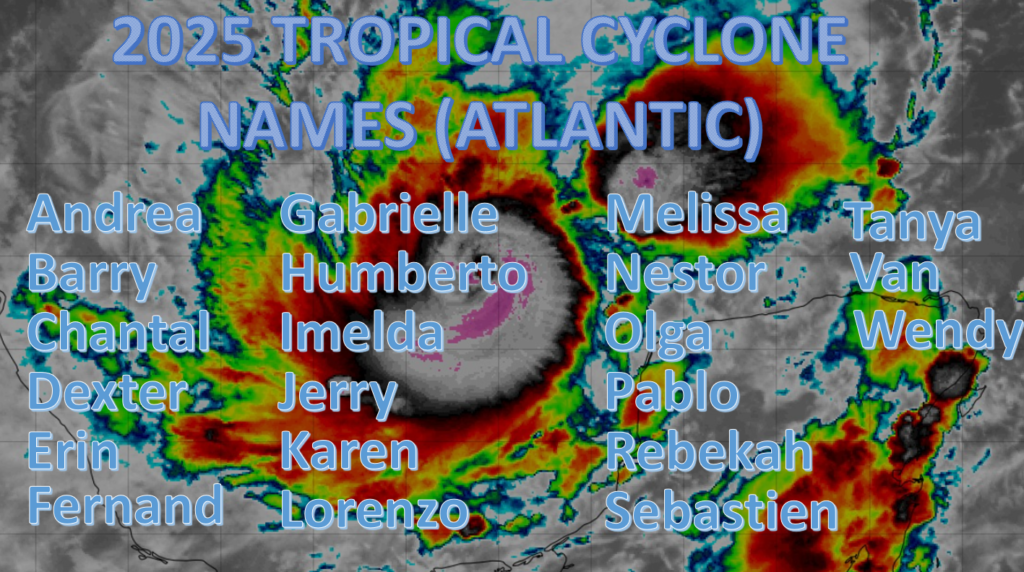
2026
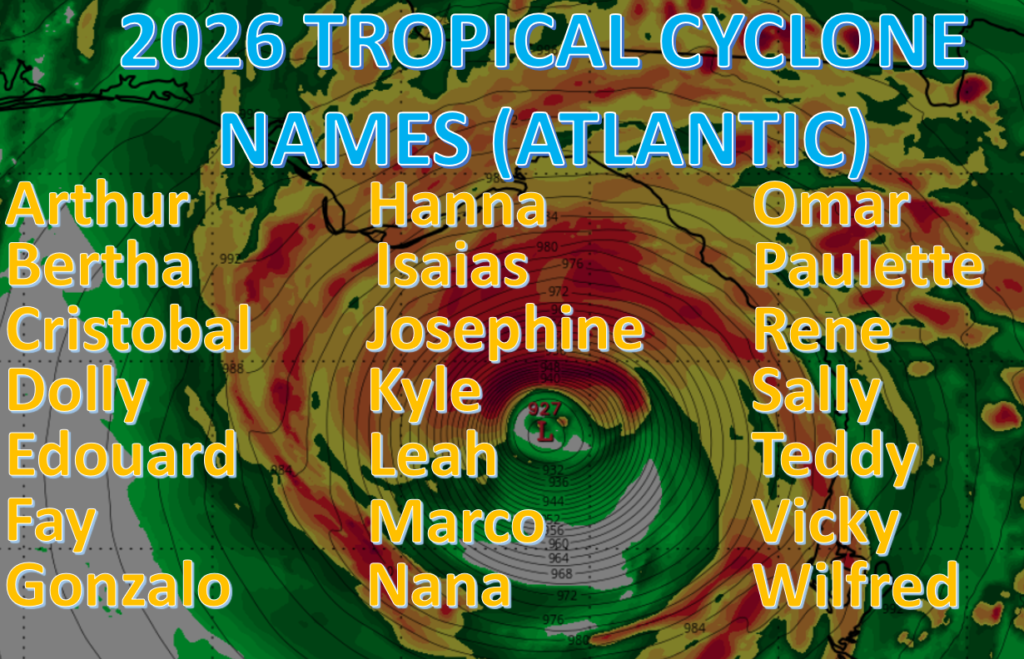
2027
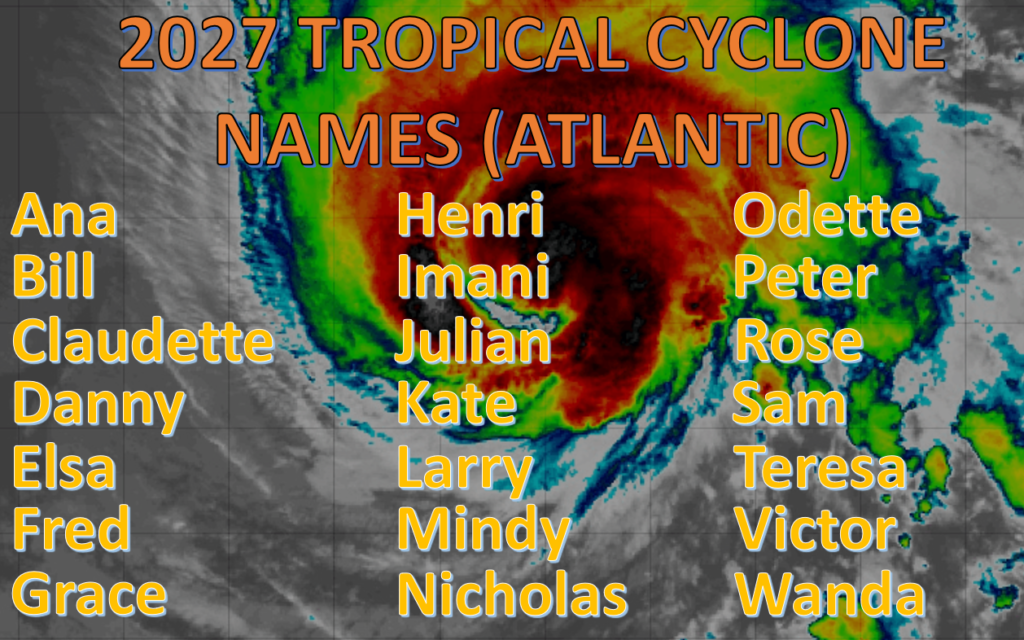
2028
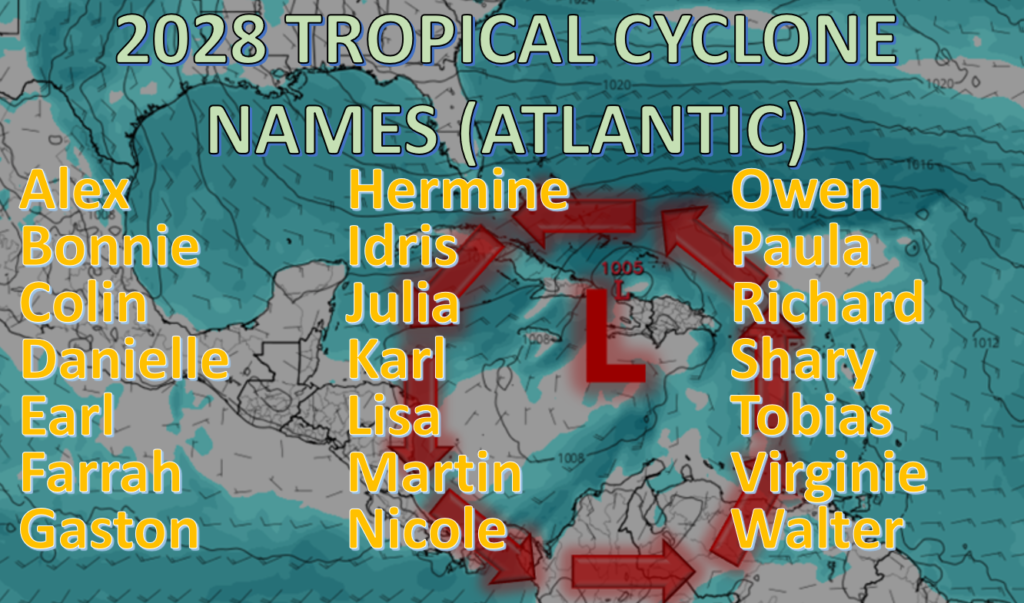
2029
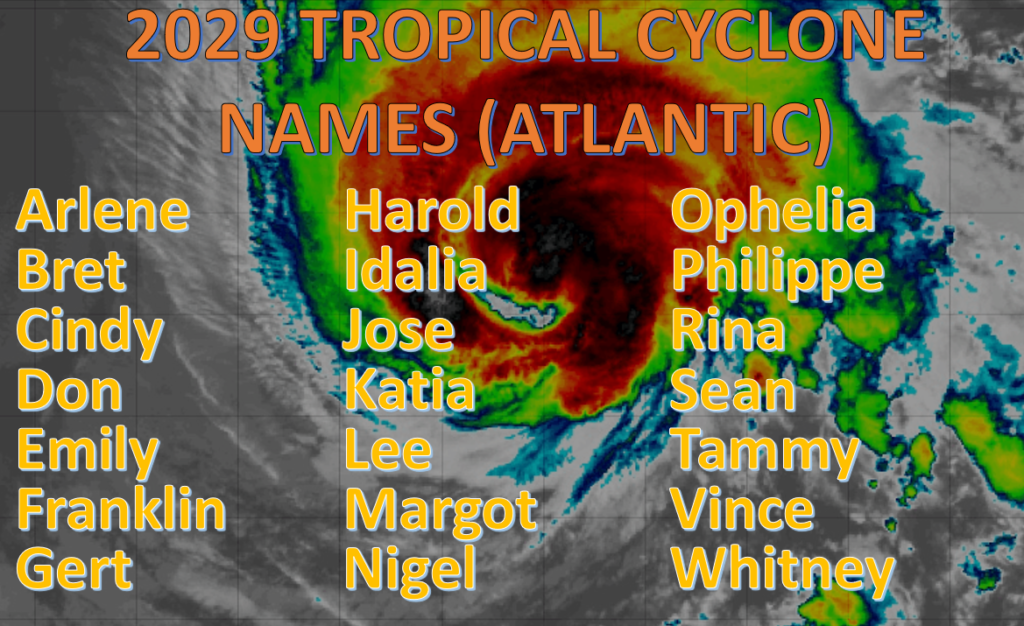
2030
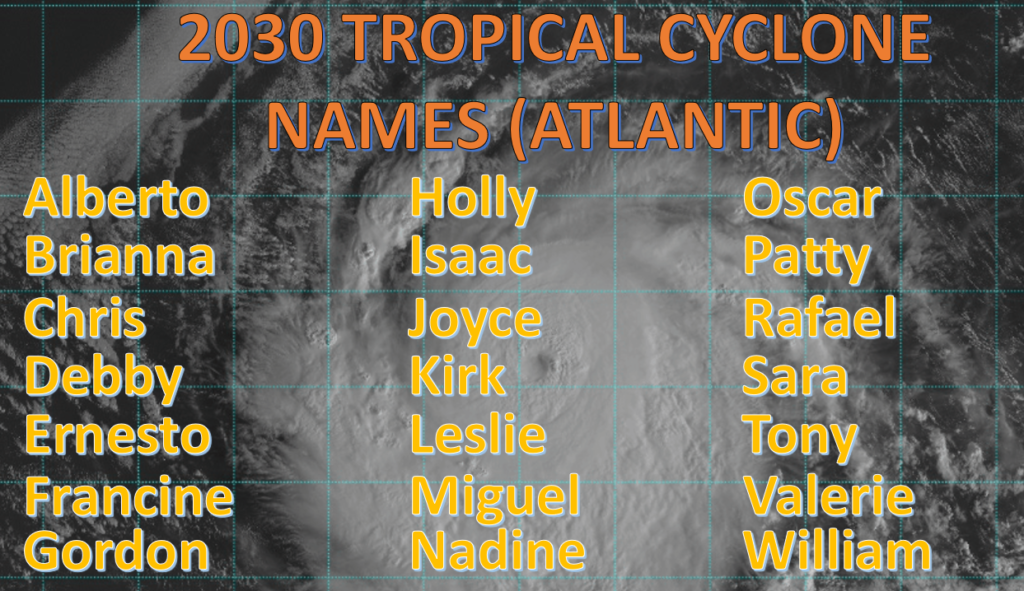
2025
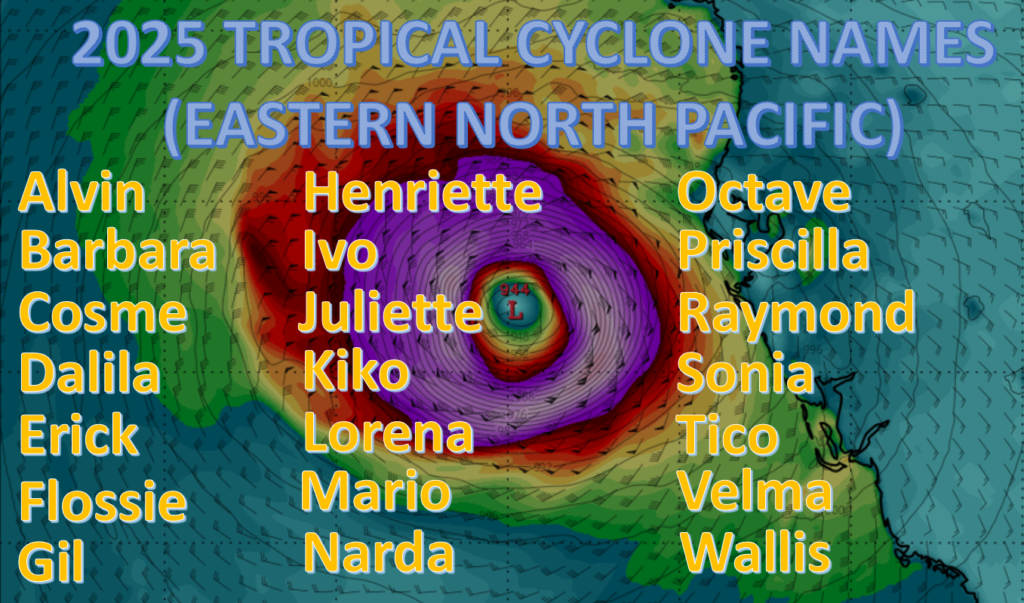
2026
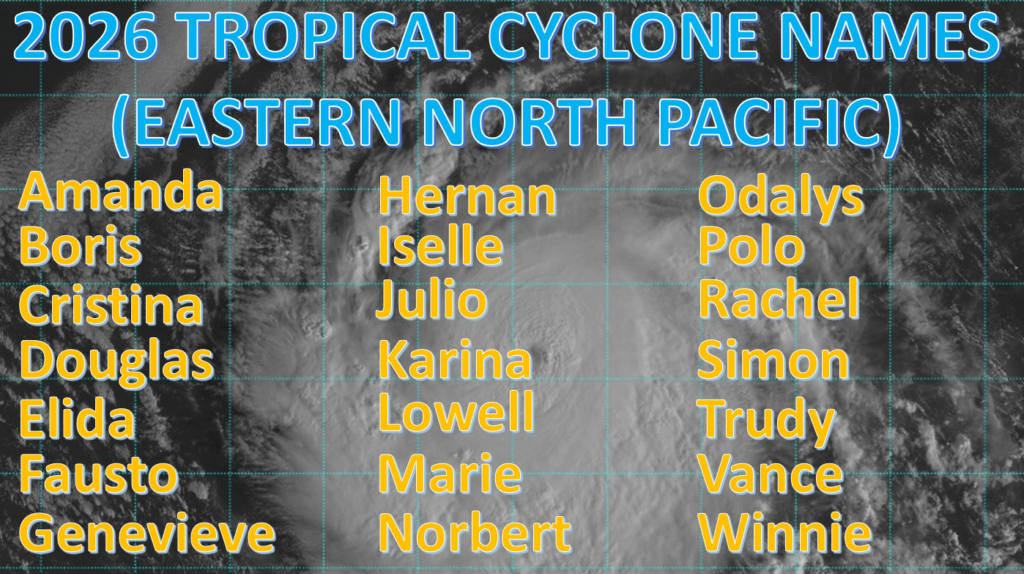
2027
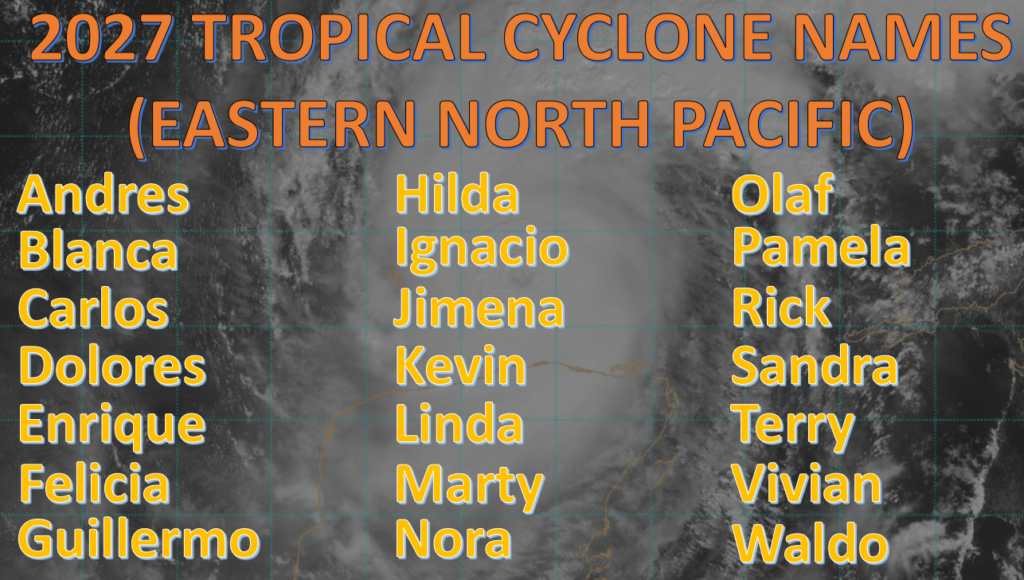
2028
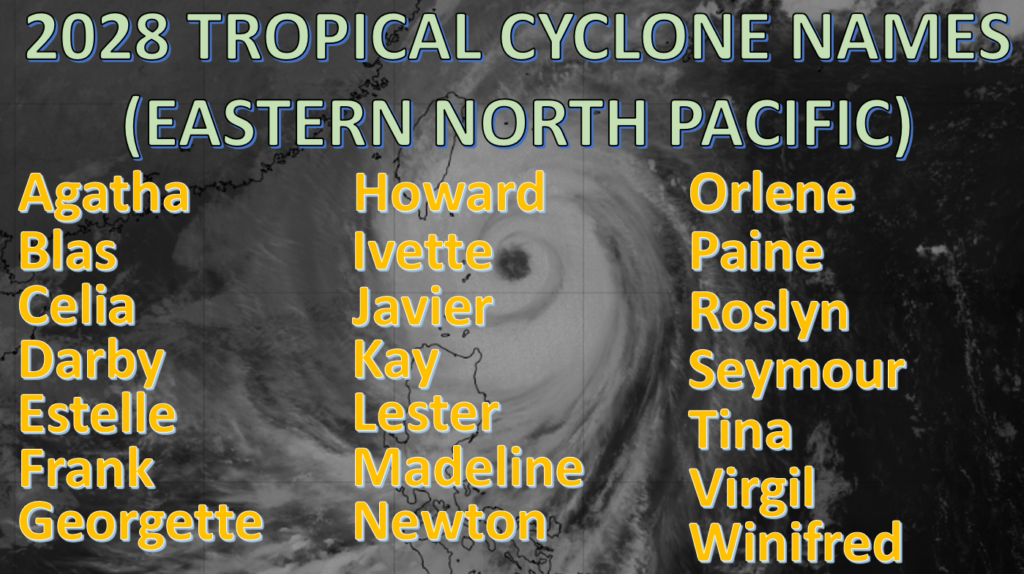
2029
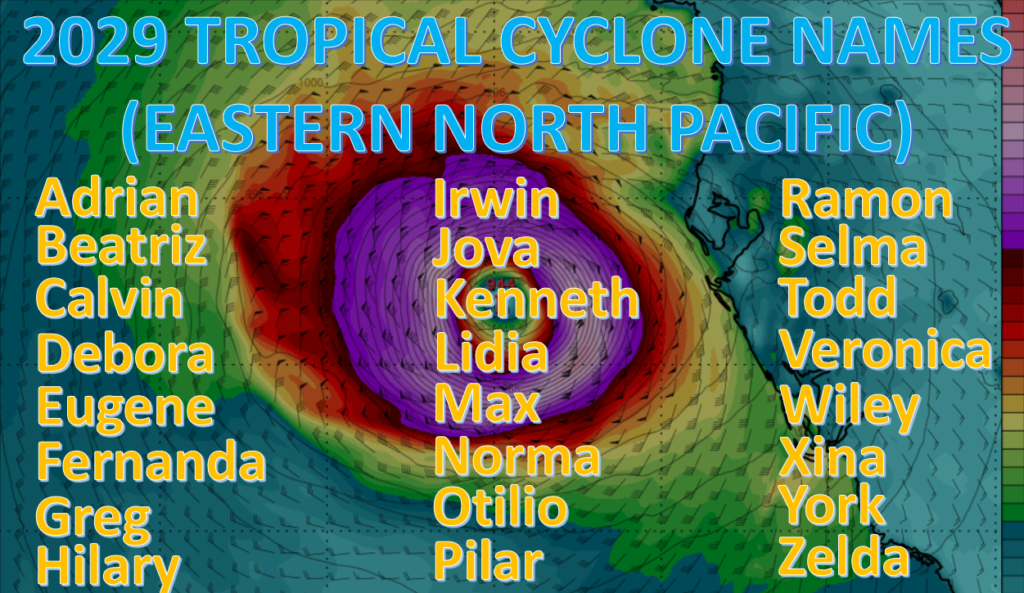
2030
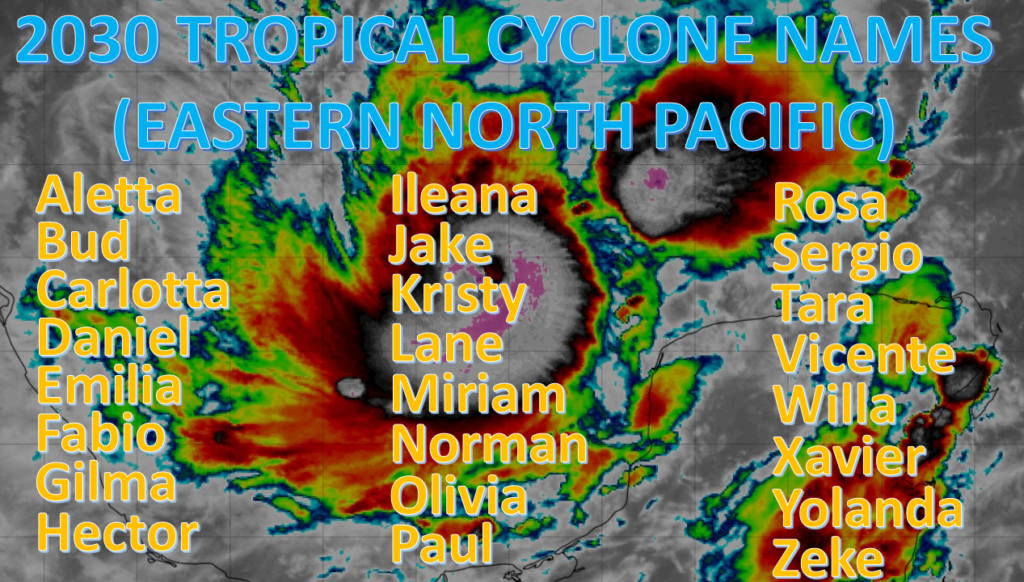
List 1
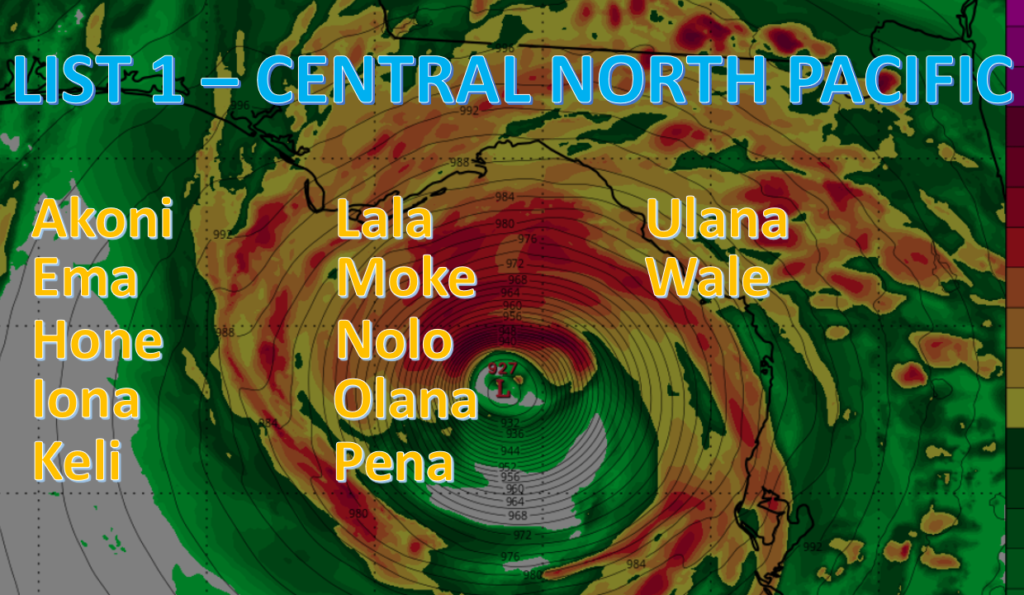
List 2

List 3
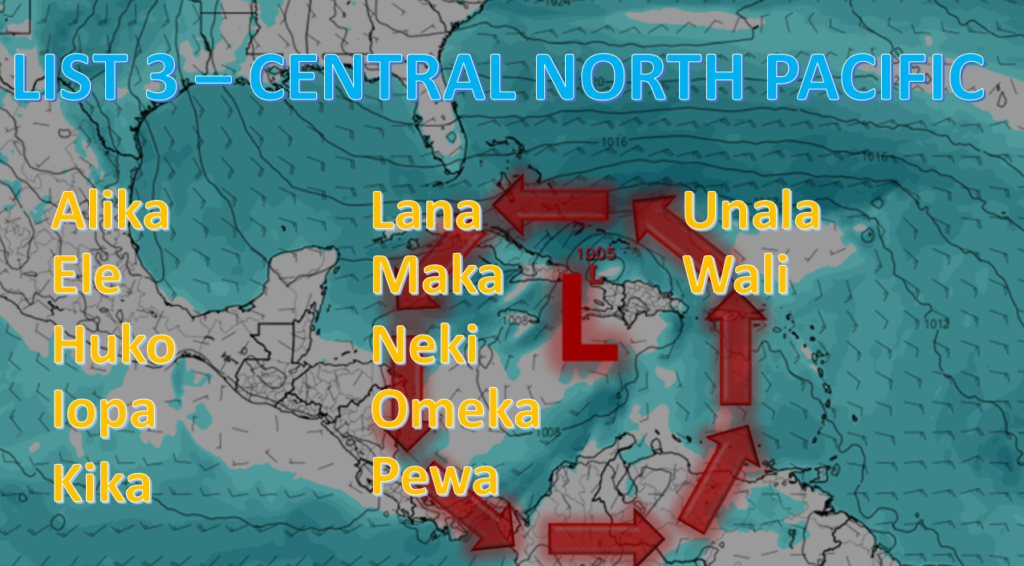
List 4
